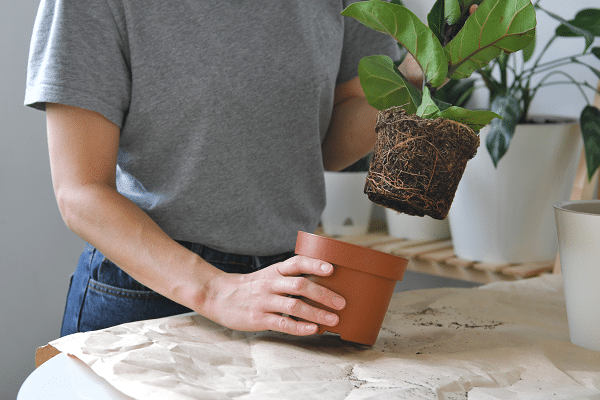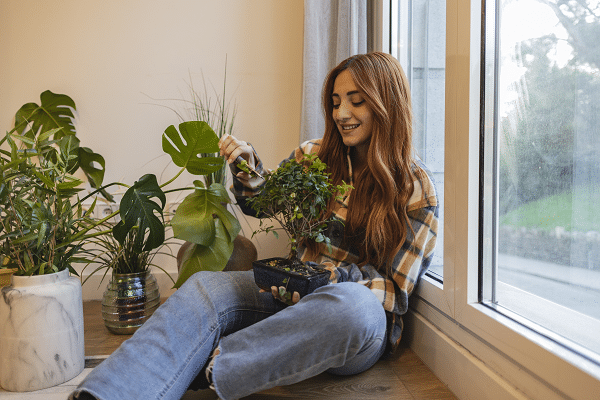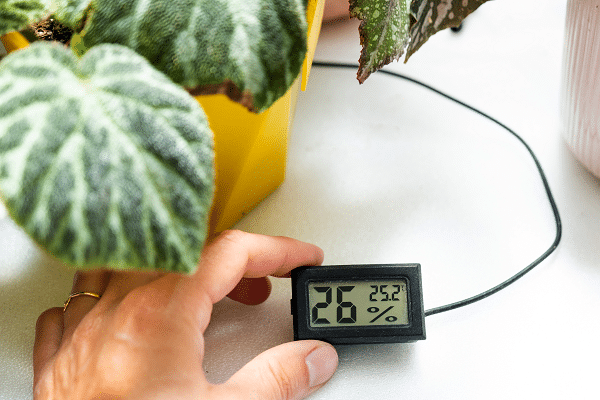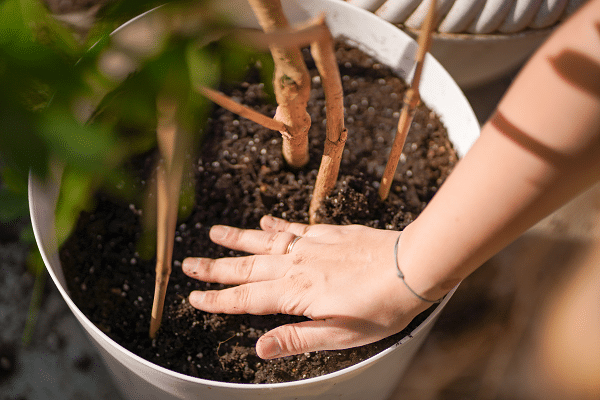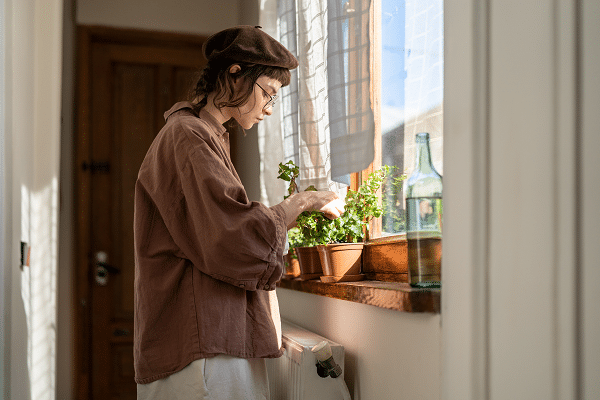Indoor plants lend a unique sense of serenity and vitality to any space. They not only enhance the aesthetic appeal of your home or office but also contribute to improved air quality. However, to ensure that these plants maintain their health and vibrancy, it is essential to know how to care for them effectively. Revitalizing indoor plants is not as daunting a task as it may seem. With the right knowledge and a little dedication, you can keep your leafy companions looking their best. This blog post will provide a comprehensive guide on how to revitalize indoor plants.
Contents
Repot Your Plant
Plants, just like any living beings, require room to grow. Over time, they might outgrow their pots, leading to a constrained root system and depleted nutrients in the soil. Repotting can breathe new life into these plants, offering them the space they need for growth. This process begins with choosing the right pot—a slightly bigger one than the current—and quality potting mix. The right time to repot is typically during the growing season when the plant can recover faster. After removing the plant from its old pot, gently untangle the roots before placing it in the new pot. Fill the pot with fresh soil and water thoroughly.
A vital consideration during repotting is the plant’s unique needs. Different species have varying root system sizes and growth rates. These factors should guide the frequency and method of repotting. For instance, slow-growing plants or those with small root systems might not need repotting as frequently as their faster-growing counterparts. By repotting appropriately, you can help your indoor plants thrive.
Wipe Down The Leaves
Clean, shiny leaves are not just about aesthetics—they play an essential role in a plant’s health. Dust and grime that accumulate on the leaf surface can block sunlight, hindering the plant’s photosynthetic process. Therefore, regular leaf cleaning can help optimize the plant’s ability to absorb light and produce food.
Cleaning the leaves is a simple task that requires care. Use a soft, damp cloth to gently wipe each leaf’s surface. For plants with small leaves or a dense foliage, a soft brush or even a gentle shower can be more efficient. Remember, the process should be gentle to avoid causing any damage to the leaves. Cleaning the leaves not only helps your plants look their best but also contributes to their overall well-being.
Prune Properly
Just as a haircut can stimulate healthier, fuller hair growth, pruning indoor plants promotes vitality and lush growth. It is an essential aspect of plant care that involves removing dead or yellow leaves and overgrown branches. By doing so, the plant directs more energy to the healthy sections, thereby encouraging new growth. Additionally, pruning helps maintain an appealing shape and prevents plants from becoming overly large for their indoor environment.
To prune an indoor plant effectively, it’s crucial to use a sharp, clean pair of pruning shears to make clean cuts without damaging the plant. The best places to prune are just above leaf nodes, where new growth is likely to occur. Ensure not to over-prune, as removing too many leaves at once can stress the plant. Regularly examining the plant and addressing any signs of overgrowth or illness can lead to healthier, more vibrant plants.
Control Light Exposure
Indoor plants, despite being bred for inside growth, still require light to perform photosynthesis. The tricky part about indoor gardening is finding the right balance of light. Symptoms of insufficient light include leggy growth, few to no flowers, or fading leaf color. On the other hand, leaves may bleach or scorch if the plant gets too much light.
To optimize light exposure for indoor plants, it’s essential to understand the plant’s individual light requirements. Some plants thrive in bright, indirect light, while others do well in low-light conditions. It might be necessary to move the plant around to different locations until the optimal light condition is found. Light exposure can be increased by placing the plant near a south-facing window or decreased by moving it farther away from the window or using sheer curtains to filter the light.
Ensure Adequate Humidity
One of the most common challenges faced by indoor plants is low humidity. Most indoor environments, especially during winter, are much drier than the tropical or subtropical climates that many indoor plants originate from. Signs of inadequate humidity include brown leaf tips, wilting, and slowed growth.
There are various ways to increase humidity for indoor plants. One of the simplest methods is misting the plants daily with water, although this may not significantly raise the humidity level. Grouping plants together can create a microclimate with a higher relative humidity. A more effective solution could be using a pebble tray filled with water placed beneath the plant. As the water evaporates, it increases the moisture level around the plant. In severe cases, a room humidifier might be the best solution to maintain appropriate humidity levels for plant health.
Use Fertilizer Wisely
Fertilizers play an indispensable role in revitalizing indoor plants, providing them with essential nutrients that might not be available in adequate amounts in the potting soil. However, just as a poor diet can affect a person’s health, poor fertilizing practices can impact plant health. Over-fertilizing can lead to ‘fertilizer burn’, affecting the plant’s roots and overall growth, while under-fertilizing can result in nutrient deficiencies.
It’s crucial to understand the specific nutrient needs of each plant species. Some might require a high-nitrogen blend, while others may need a balanced or high-phosphorus blend. As a rule, fertilizers should be used during the growing season and reduced or eliminated during dormant periods. The golden rule in fertilizing is ‘less is more.’ It’s easier to add more later than to reverse the effects of too much fertilizer.
Monitor For Pests And Diseases
Even with meticulous care, indoor plants can fall prey to pests and diseases. These adversaries not only affect the plant’s appearance but also hamper their overall growth and health. Common indoor plant pests include spider mites, mealybugs, and aphids, while diseases often manifest as leaf spots or root rot.
Being proactive is key to managing plant pests and diseases. Regularly inspecting plants can help identify potential issues before they become severe. If pests are detected, isolate the affected plant to prevent the pests from spreading to other plants. Depending on the type of pest, solutions could range from using insecticidal soap to introducing beneficial insects. Similarly, for diseases, early detection and appropriate treatment can save the plant and prevent spreading. Maintaining good plant care practices will often prevent most pest and disease problems.
Conclusion
Revitalizing indoor plants involves a comprehensive approach, addressing all aspects from repotting to pest control. Each step covered in this guide plays a pivotal role in the overall health and vitality of indoor plants. Like any living being, plants require attention and care, and investing effort in their well-being can yield a gratifying result—a home filled with lush, vibrant greenery. It’s important to remember that every plant species is unique and will require some level of tailored care.
